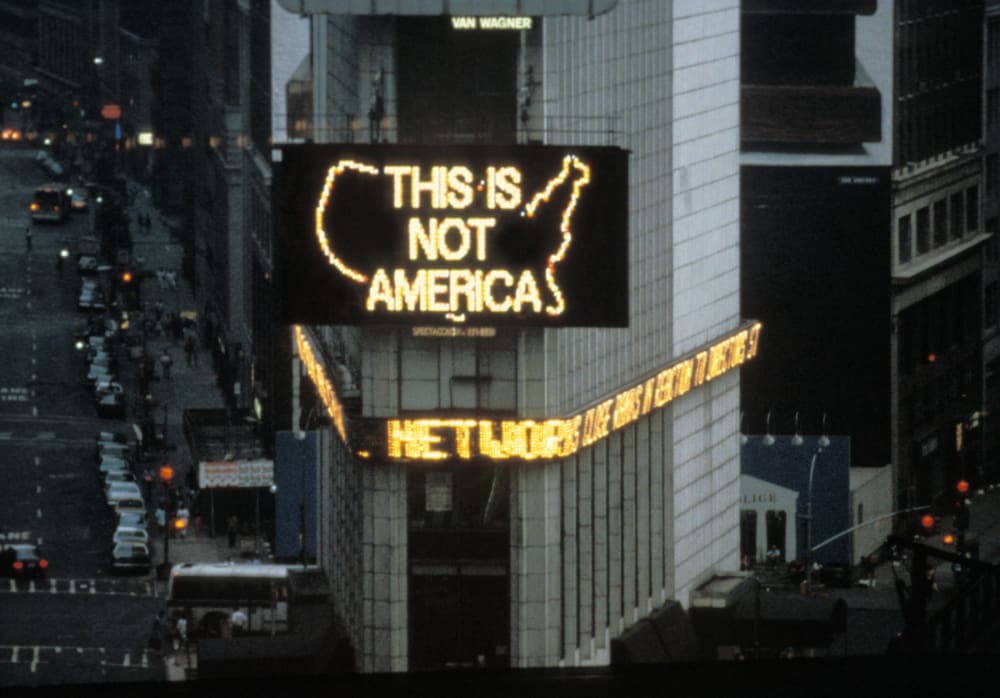From February 11 to April 15, 2017 Galerie Thomas Schulte presents Shadows, a solo exhibition by the Chilenian artist Alfredo Jaar.
Shadows is the second of a trilogy of works dedicated to a single image. The first, titled The Sound of Silence, was, according to Jacques Ranciere, a “theater built for a single image.” The image in this first work was taken by South African photographer Kevin Carter in South Sudan, an image for which he received the Pulitzer Prize. Shortly after, Carter committed suicide. The Sound of Silence has been exhibited 27 times in the last 15 years, in 18 countries and eight languages.
This second work, Shadows, is based on an extraordinary photograph by Dutch photographer Koen Wessing (1942-2011). Taken in Estelí, Nicaragua during the last days of the Somoza Regime in 1978, the photograph captures the moment of absolute grief of two young women who have just learned of the death of their father.
Jaar was inspired by an earlier work of Koen Wessing, where the photographer, finding himself in Santiago de Chile in the middle of the military coup, documented its aftermath in a book consisting solely of images entitled CHILI SEPTEMBER 1973. This work captured the horror of September 11, 1973 without using a single word.
The artist has structured Shadows in a similar way. Utilizing an extreme economy of means, he has created a mise en scene using seven of Wessing’s photographs: three images introducing the principal image, and a final three describing the aftermath.
Historical Notes
Estelí, Nicaragua, September 1978: Koen Wessing observes a group of campesinos carrying the body of a man killed by Somoza’s National Guard, who was a farmer too. Wessing takes a few photographs and follows the group to the victim’s home. The daughters of the man, who had heard of their father’s death, arrive home and approach the photographer, crying.
Wessing, his legs shaking, takes the photograph that is at the core of this project by Alfredo Jaar. “From this image I still get nightmares,” says Wessing. In a disturbingly similar parallel to Chile’s dictatorship, Nicaragua endured its own 43-year military dictatorship instated by Anastasio Somoza in 1936 and enforced until 1979 by his two sons, first Luis Somoza and then Anastasio Somoza. Like that of Pinochet in Chile, the Somoza regime was fueled by U.S. funds and support. The U.S. installed Somoza in power by helping him mastermind the assassination of Augusto Sandino, the leader of the resistance to the U.S. occupation of Nicaragua. The U.S. Marines, having occupied Nicaragua since 1912, were expelled from the country by General Sandino in 1933 and thereafter employed the Somoza dynasty and their U.S.-trained National Guard as a strategy to sustain their influence over the region.
The followers of Sandino, the Sandinistas, did not retake power until 1979, when they overthrew the last of the Somozas. In September 1978 at the time of Wessing’s visit, the regime controlled all aspects of Nicaraguan lives, from the economy, wealth, and land to elections and media. Somoza’s greed and abuse particularly persecuted and starved the country’s large population of campesinos, whom Wessing spent much of his time photographing.
Alfredo Jaar
Shadows, 2014
Installation with LED lights, aluminum, video projection and six lightboxes with black and white transparencies
Lightboxes: 33 x 35.5 cm / 13 x 14 in each
Projection: 294.6 x 442 cm / 116 x 174 in
Overall dimensions variable
Lighting engineering by Tommy Voeten
Technical production by Ravi Rajan
Original photographs by Koen Wessing (1942-2011): Estelí, Nicaragua, September 1978
© Koen Wessing / Netherlands Fotomuseum, Rotterdam, The Netherlands
The collection and copyright of Koen Wessing is administered by the Netherlands Fotomuseum in Rotterdam, The Netherlands







